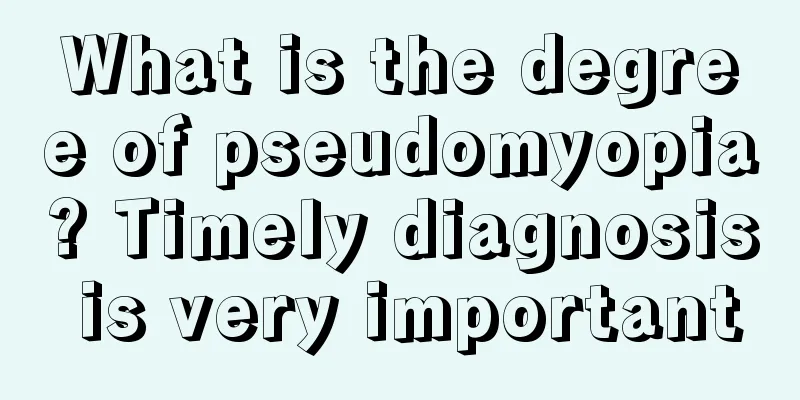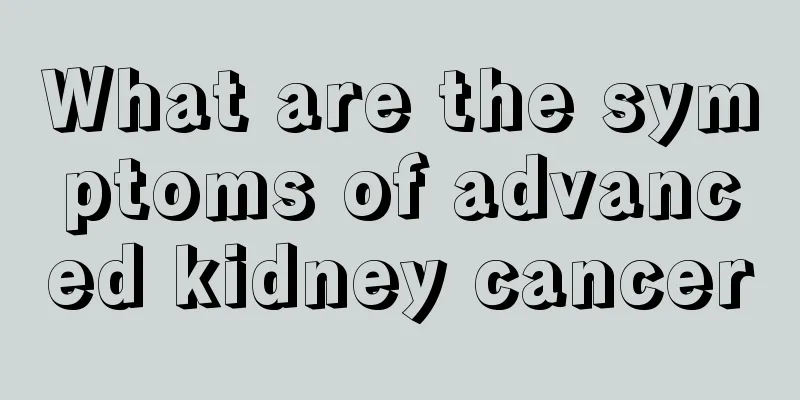What is the degree of pseudomyopia? Timely diagnosis is very important

|
If children or teenagers develop myopia, it is often not true myopia but pseudomyopia. Everyone should understand the symptoms of pseudomyopia and make a timely diagnosis. Parents should supervise their children to prevent pseudomyopia. 1. Symptoms of pseudomyopia 1. Far vision is lower than near vision. Far vision is less than 1.0, and near vision is equal to 1.0. 2. Vision is unstable. It may improve after a period of rest, but may deteriorate again when looking at close objects. 3. The efficacy is uncertain. Pseudomyopia is only effective during treatment for all current therapies, but may relapse when treatment is stopped and near-distance function is restored. 4. It is more common in teenagers. Because teenagers have strong accommodation ability, pseudomyopia is more common, but it can also occur in a small number of middle-aged people engaged in near work. 2. Diagnosis and Differentiation 1. Pseudomyopia: Farsightedness vision is less than 1.0, which can be corrected to 1.0 with negative spherical lenses. However, after using ciliary muscle paralysers (atropine, homatocrystalline) or fogging, myopia disappears and becomes emmetropia or hyperopia. This type of myopia is mainly caused by accommodative tension, so the myopia disappears after the accommodation is relaxed. It is usually seen in younger patients with a shorter onset time and lower refractive power. 2. True myopia: refers to the myopia state in which the myopia refractive power remains unchanged after using ciliary muscle paralyzing drugs to blur the vision. This type of myopia is mainly due to organic factors and caused by elongation of the eye axis, and has no obvious relationship with accommodation. It is usually seen in people who are older, have been ill for a long time, and have higher refractive power. 3. Intermediate myopia (or semi-true myopia): refers to the myopia condition in which the myopia refractive power is reduced but not completely eliminated after using ciliary muscle paralyzed drugs or fog vision. This type of myopia has both regulatory factors and organic factors. The reduced refractive power after regulatory relaxation is the result of joint tension, while the remaining refractive power is the result of organic factors. A school myopia survey showed that the lower the grade, the more pseudomyopia there is, and the higher the grade, the less pseudomyopia there is. This suggests that the occurrence of myopia may go through a process from false -> semi-true -> true. However, whether it is possible for some people to directly develop true myopia without going through the pseudo-stage requires further observation and research. |
<<: Is enema good for the body? Can I do enema frequently?
>>: Early symptoms and examination methods of myasthenia gravis
Recommend
What to do if melanin deposits in eczema
Babies are more likely to suffer from eczema, mai...
What color is good for eyebrow tattoo
Colors are changeable, and we can see the shadows...
What are the symptoms of knee arthritis
Knee arthritis is relatively common. Because our ...
If you want to stay away from rectal cancer, you must start with its cause
At present, the incidence of rectal cancer is get...
The difference between white phosphorus and red phosphorus
We usually see that white phosphorus and red phos...
Introduction to the purpose and usage of liquefied gas pressure reducing valve
The liquefied gas pressure reducing valve is a va...
Is cold light whitening effective for fluorosis?
Dental fluorosis is also a common oral problem. W...
Warm up in the gym
We must warm up before doing fitness, because war...
Syndrome differentiation and treatment of liver depression and blood dryness type skin cancer
my country has records of traditional Chinese med...
Treatment of sequelae of lumbar disc herniation surgery
In daily life, many friends who have undergone su...
Drugs that lower creatinine
If you find that your creatinine is high during a...
Can sagging eyelids be restored by frequently using double eyelid tape?
Double eyelids are recognized by people as the mo...
Is it possible to permanently remove male scrotal hair?
In today's society, many people hate excessiv...
Treatment after bladder tumor surgery
There is still no definite answer to the incidenc...
Under what circumstances can lung cancer not be operated on? Lung cancer is not suitable for surgery if it has these symptoms
Patients with multiple groups of fused mediastina...









